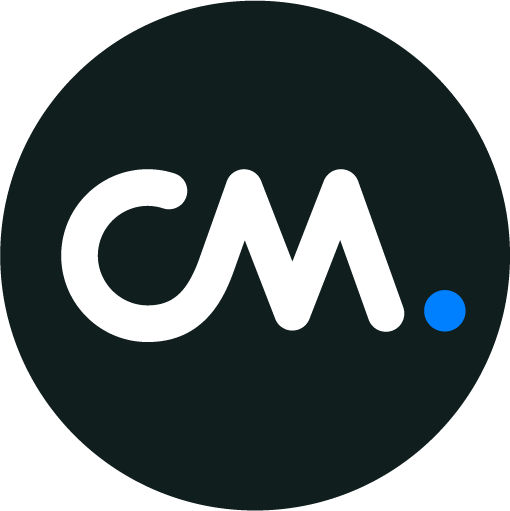Introduction
This guide provides step-by-step instructions for creating a basic voice flow using the ‘Voice Flow Builder’ on the CM.com platform. Voice flows allow you to configure what happens before a call connects to an agent in your ‘Mobile Service Cloud (MSC)’ environment. This ensures a smooth and professional experience for your callers.
Overview
When setting up a voice flow, you can define actions such as routing calls based on dates, times, or caller input, playing prompts, and transferring calls to specific departments or agents. This guide will walk you through creating a basic flow using the ‘Basic Front Desk’ template.
Step-by-Step Instructions
1. Access the Voice Flow Builder
-
Log in to the ‘CM.com platform’.
-
Open the ‘Voice Flow Builder’ app from the nine-tile menu.
2. View Existing Call Flows
-
Upon opening the app, you will see a list of active call flows for your account.
-
To edit an existing flow:
-
Click the three dots next to the flow.
-
Select ‘Edit’ to open the flow editor.
-
3. Create a New Flow
-
To start a new flow, you can:
-
Create a completely new flow.
-
Use an existing template, such as:
-
‘Basic Front Desk’
-
‘Fetch Data from an API’
-
-
-
For this guide, select the ‘Basic Front Desk’ template.
4. Understand the Flow Editor
-
The ‘Flow Editor’ consists of:
-
‘Drag-and-Drop Options’: Located on the left, these allow you to add blocks to your flow.
-
‘Flow Canvas’: Located on the right, this displays the current flow structure.
-
5. Key Blocks in the Basic Flow
The ‘Basic Front Desk’ template includes several pre-configured blocks. Below is an explanation of the key blocks and their functions:
a. ‘Incoming Call’
-
Every flow begins with an ‘Incoming Call’ or ‘Call Answered’ block.
b. ‘Date-Based Routing’
-
This block checks if the call occurs on a predefined date (e.g., holidays).
-
‘Configuration’:
-
If the call matches a holiday, the flow plays a prompt (e.g., a holiday message) and terminates the call.
-
If the call does not match a holiday, the flow proceeds to the next block.
-
c. ‘Time-Based Routing’
-
This block checks if the call occurs during your set opening hours.
-
‘Configuration’:
-
If the call is outside opening hours, the flow plays a prompt (e.g., a closed message) and terminates the call.
-
If the call is within opening hours, the flow proceeds to the next block.
-
d. ‘IVR Menu’
-
The ‘IVR (Interactive Voice Response) Menu’ allows callers to navigate the flow using numeric input.
-
‘Configuration’:
-
Callers can select from predefined options (e.g., press 1 for Shipping, 2 for Finance, 3 for General).
-
Invalid inputs trigger an error message and allow the caller to try again.
-
After a set number of invalid attempts, the call is terminated.
-
e. ‘Transfer’
-
The ‘Transfer’ block routes the call to:
-
An external phone number.
-
A distribution group.
-
The ‘Mobile Service Cloud (MSC)’ environment to connect with an available agent.
-
-
‘Configuration’:
-
For MSC transfers, you must provide the ‘API Key’ of your environment (found in MSC settings).
-
Optionally, you can use a ‘Webstore Referrer’ or ‘Routing Keywords’ for advanced routing.
-
6. Additional Blocks
The following blocks are available in the ‘Voice Flow Builder’ but are not covered in this guide:
-
‘HTTP Request’: For making API calls.
-
‘Create Variable’: For storing data during the flow.
-
‘DTMF Input’: For capturing numeric input from callers.
-
‘Record Message’: For recording audio messages from callers.
-
‘Conditional Split’: For branching the flow based on conditions.
-
‘Number Prefix Check’: For routing based on phone number prefixes.
-
‘Direction Check’: For determining the direction of the call.
These blocks will be explained in much more detail in this article.
Video
Please watch the video below on how to set-up this example.
Key Features of the IVR Menu
-
‘Prompt Options’:
-
Use an ‘AI Voice’ to play messages.
-
Upload your own audio recordings.
-
-
‘Failure Handling’:
-
Set a timeout for caller input.
-
Define the maximum number of invalid attempts before terminating the call.
-
-
‘DTMF Number Options’:
-
Assign numeric inputs to specific actions (e.g., 1 for Shipping, 2 for Finance, 3 for General).
-
Conclusion
You have now learned how to set up a basic voice flow using the ‘Voice Flow Builder’. This example demonstrates how to use key blocks like ‘Date-Based Routing’, ‘Time-Based Routing’, ‘IVR Menu’, and ‘Transfer’ to create a functional call flow.
Remember, this is just one example of what you can achieve with the ‘Voice Flow Builder’. You can customize your flow further by exploring additional blocks and configurations in this documentation.
<!-- Daily excerpt sync refresh -->
